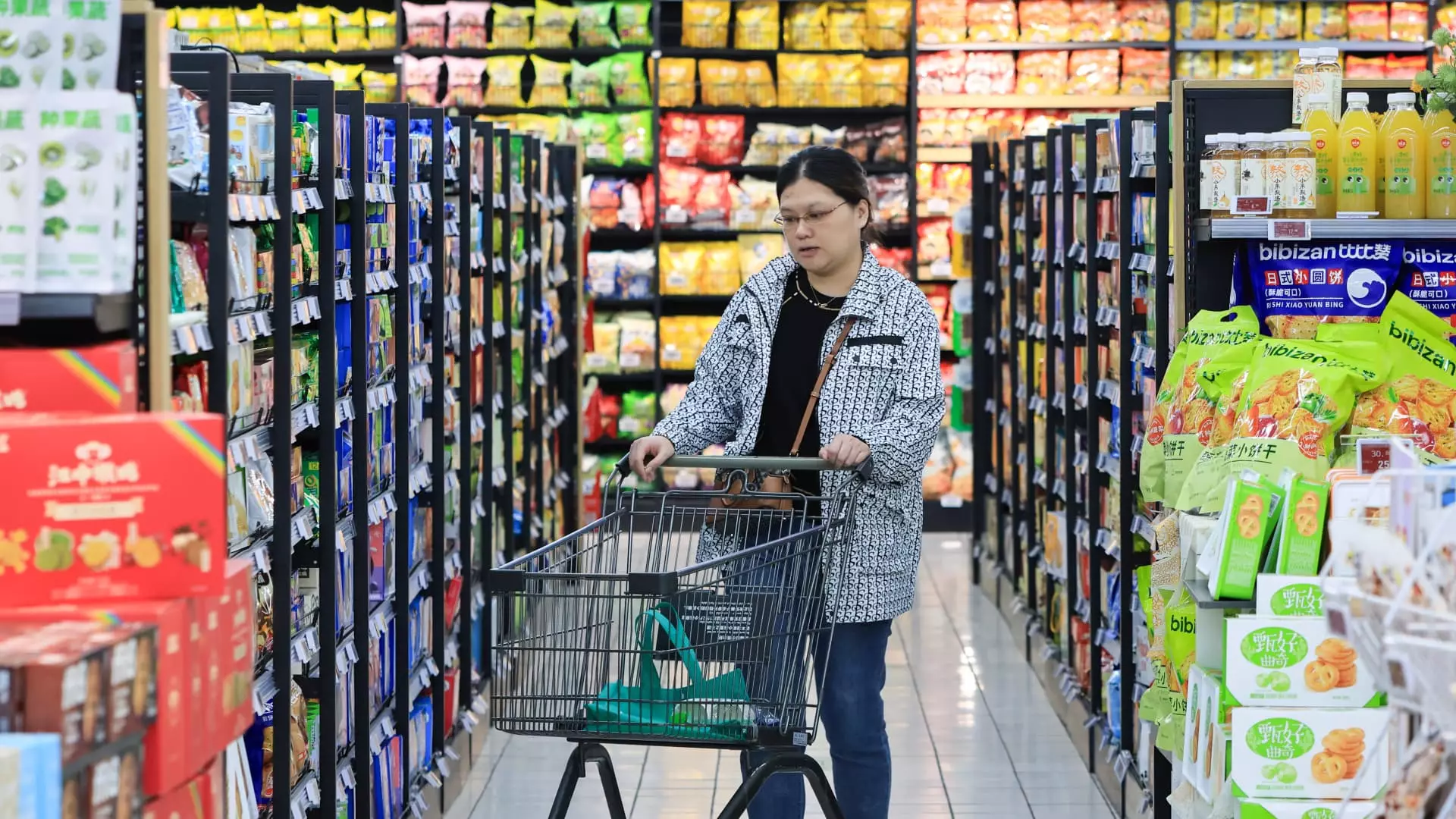As of November 2023, China witnessed a significant cooling of consumer inflation, which fell to a modest increase of 0.2% compared to the same period last year—the lowest growth rate seen in five months. This figure was notably below expectations, as analysts anticipated a slight uptick to 0.5% from the previous month’s 0.3%. Notably, core inflation, excluding price fluctuations associated with food and fuel, edged up to 0.3%, a slight increase from 0.2% in October. These figures suggest a concerning trend for the world’s second-largest economy, indicating persistent weakness in domestic demand.
The stagnation in growth is underscored by the rising costs of key food items like pork and fresh vegetables, which experienced year-on-year price increases of 13.7% and 10.0%, respectively. Despite these spikes in specific sectors, the overarching narrative is one of deflationary pressure within the broader economic landscape.
Along with the muted consumer inflation, China’s producer price index (PPI), which reflects wholesale inflation, has continued its slide. November marked the 26th consecutive month of PPI decline, with a 2.5% drop in year-on-year prices—marginally better than the anticipated 2.8% decline highlighted by analysts. Within this context, certain sectors experienced more pronounced decreases; for instance, the prices for ferrous metal materials plummeted by 7.1%, while fuel and power saw drops of 6.5%.
Importantly, the deflation seen in producer prices illustrates a stark divergence in economic health between consumer demand and industrial output. Erica Tay of Maybank emphasizes that significant inventories of both raw materials and finished goods exacerbate this supply-demand mismatch, suppressing prices further. This entrenched PPI deflation raises critical questions about the effectiveness of government stimulus measures recently employed.
In response to these economic pressures, the Chinese government has adopted a series of stimulus initiatives since September. These have included interest rate cuts, interventions in both equity and property markets, and an array of measures aimed at enhancing bank lending. However, despite these aggressive tactics, the desired effects on inflation and consumer sentiment remain elusive.
Analysts like Becky Liu from Standard Chartered Bank highlight the potential for prolonged deflation, drawing parallels to historical events such as trade disputes with the U.S., which have typically preceded declines in inflation rates. With expectations that PPI inflation could remain negative until 2025, the prospect of sustained economic stagnation looms large.
Emerging Signs of Economic Recovery
Nevertheless, it’s pivotal to note that not all indicators paint a bleak picture for China’s economy. Some sectors are beginning to demonstrate signs of recovery. For instance, retail sales surpassed expectations in October, and manufacturing activity has shown consecutive expansions in November. These statistics suggest that while consumer inflation is currently subdued, certain aspects of the economy are finding footing.
This mixed economic sentiment will be the focal point as China’s top leaders prepare for the annual Central Economic Work Conference, where they will delineate economic targets and additional stimulus plans for 2025. This forthcoming dialogue is crucial for anchoring investor confidence and guiding economic strategies.
Revised Growth Projections and Future Outlook
Despite these signs of progress, Fitch Ratings has revised its projections for China’s GDP growth, downgrading estimates for both 2025 and 2026. The agency now anticipates growth rates of 4.3% and 4.0%, respectively, citing an anticipated shift toward more protectionist U.S. trade policies as a significant concern. This realignment of forecasted growth further complicates the outlook for various sectors, particularly the fragile real estate market, which, despite signs of stabilization, poses considerable risks if downturn trends continue.
As China navigates through these challenging economic waters, the combination of subdued consumer demand, entrenched PPI deflation, and the government’s responsive measures sets the stage for a careful economic recalibration in the years to come. Addressing these persistent inflationary challenges effectively will be key to sustaining recovery and fostering long-term economic stability.


Leave a Reply